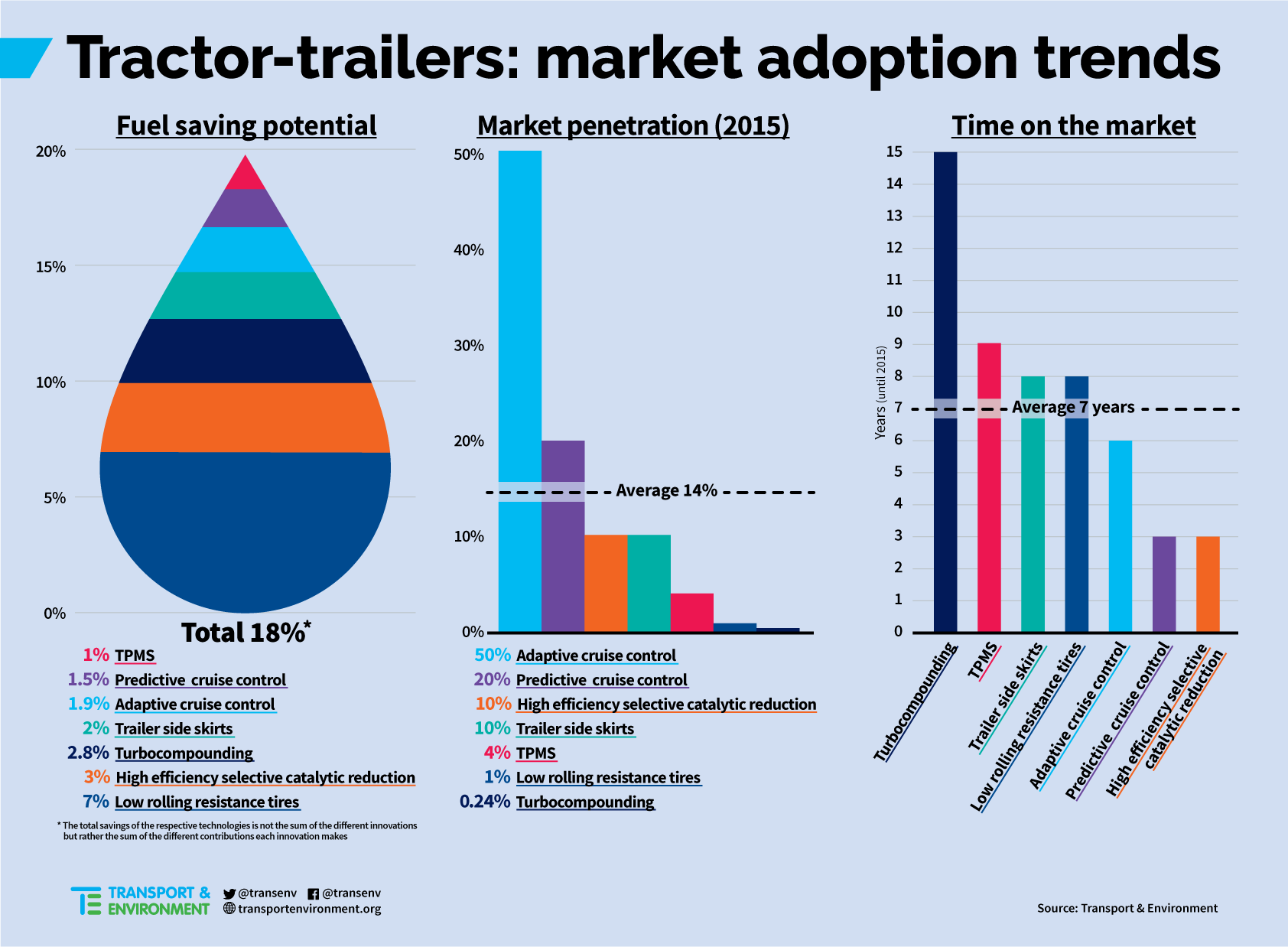
Interested in this kind of news?
Receive them directly in your inbox. Delivered once a week.
Existing technologies and strategies currently being discussed – such as the first ever EU CO2 standards for trucks – together with an increased share of rail freight could reduce truck and bus emissions 36% by 2050 compared to a business-as-usual approach. But to reach zero emissions by 2050 trucks must be powered by renewable, decarbonised electricity, the study finds, with the key question being how clean electricity can be used to power trucks and buses. Battery electric trucks, e-highways, hydrogen fuel cells and power-to-liquid (PtL) could all be used to achieve steep emission cuts. But as electric engines are much more efficient, they would only require 25% of the renewable energy needed by hydrogen and PtL.
T&E’s analysis and climate manager, Carlos Calvo Ambel, said: ‘Truck CO2 standards are needed to maximise the potential of diesel trucks and meet Europe’s 2030 climate goals, but this must be complemented by a clear signal that manufacturers must invest in zero emission technologies.The Commission is considering a zero emissions vehicle mandate for cars. They should introduce one for trucks and buses too.’
While decarbonising trucks and buses is possible, it will not happen without: ambitious policies such as CO2 standards for trucks and trailers; a zero emission vehicle (ZEV) mandate/quota for buses and trucks; and adapting road charges, tolls and fuel taxes. On top of that, infrastructure to allow the use of electricity in land freight is required, while cities will need zero-emission freight strategies.
Calvo Ambel concluded: ‘Europe does not have a vision, let alone a plan, to decarbonise trucking. The European Commission’s planned mid-century decarbonisation strategy is a great opportunity to tackle this problem and would help us catch up with California and China that are miles ahead when it comes to zero-emission trucks and buses.’
Technology ‘already available’
Meanwhile, a separate report found that European trucks could be up to 18% more fuel efficient and save hauliers €5,700 a year by using technology that is already available. However, the market is failing to drive uptake of these innovations: for example, turbocompounding delivers a 3% fuel saving but has only being installed in 0.24% of European trucks. This despite having being on the market for 15 years.
Hauliers spend on average €32,000 a year per truck on fuel, so these innovations offer significant cost savings. T&E’s safer and cleaner trucks officer, Stef Cornelis, said: ‘It’s a classic case of market failure. Many technologies are only on 10% or less of new trucks. Given the value of the savings on offer, it is a shame to see so much innovation left on the shelf.’
T&E’s report said that truckmakers only sell many of these technologies as expensive optional extras, leaving hauliers unable to meet the cost upfront. Another explanation for the market’s failure is the sharing of trailers, which means a haulier may not always reap the benefit of fuel-saving innovations used on trailers.
The European Commission will publish in early 2018 its proposed European truck fuel-efficiency standards. Trucks represent less than 5% of all vehicles on the road in Europe but are responsible for around a quarter of road transport’s greenhouse gas emissions.


